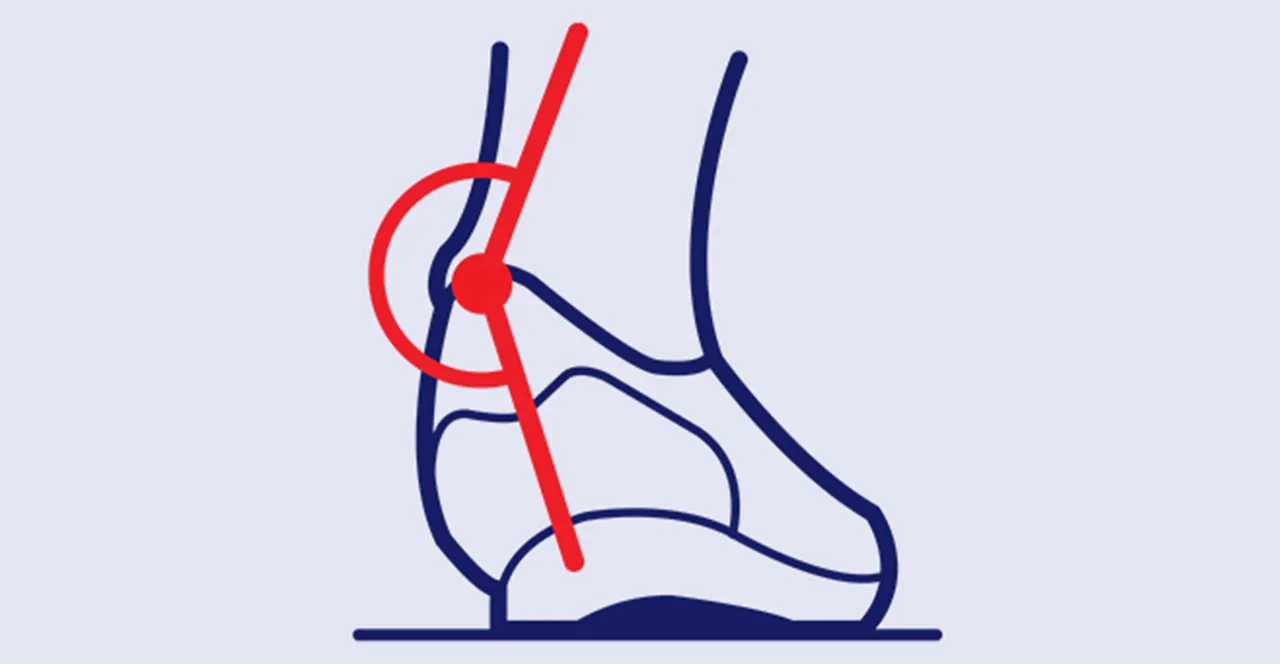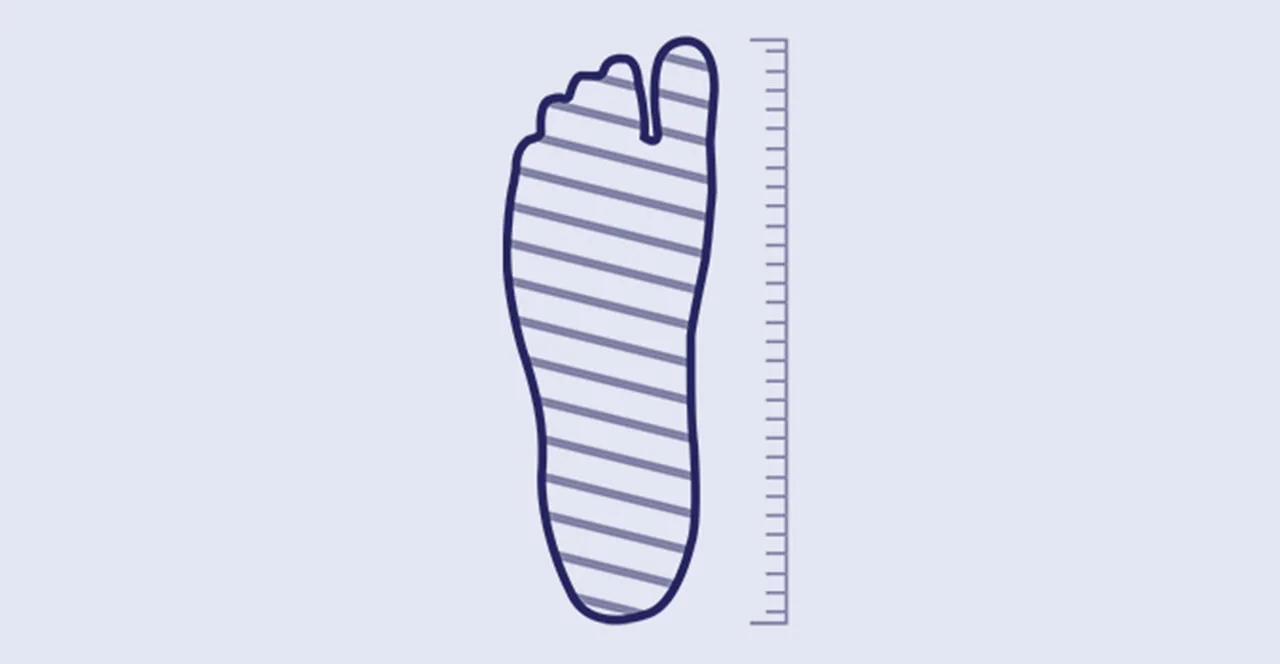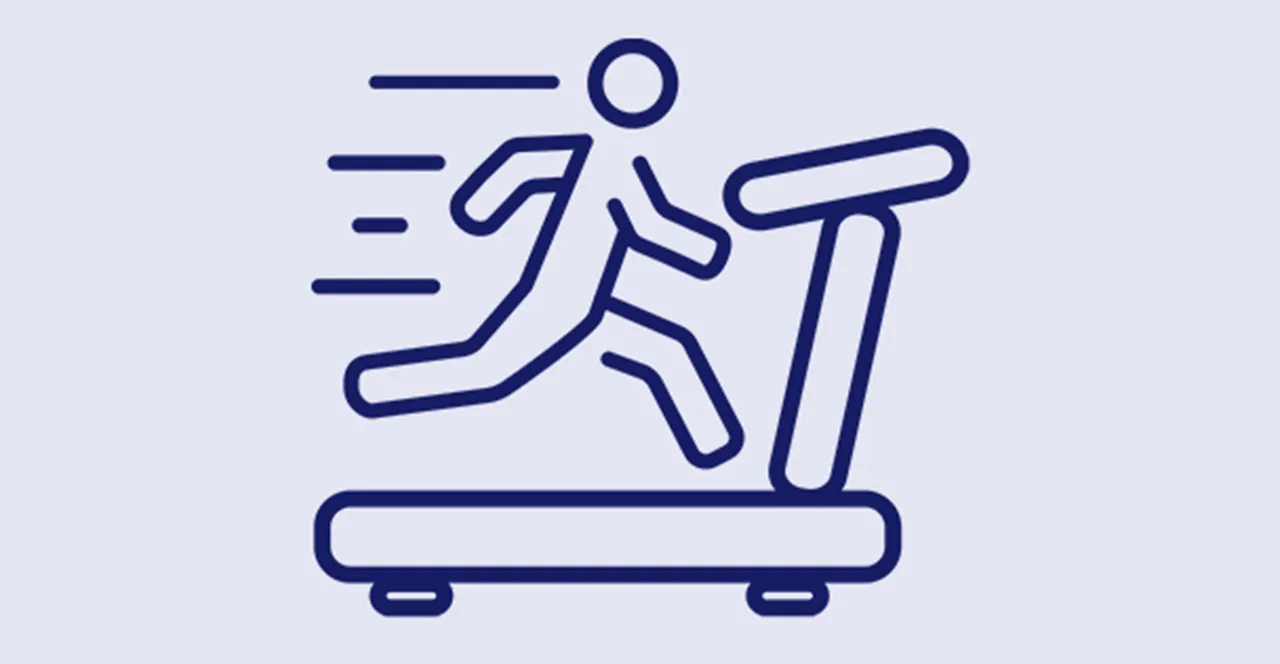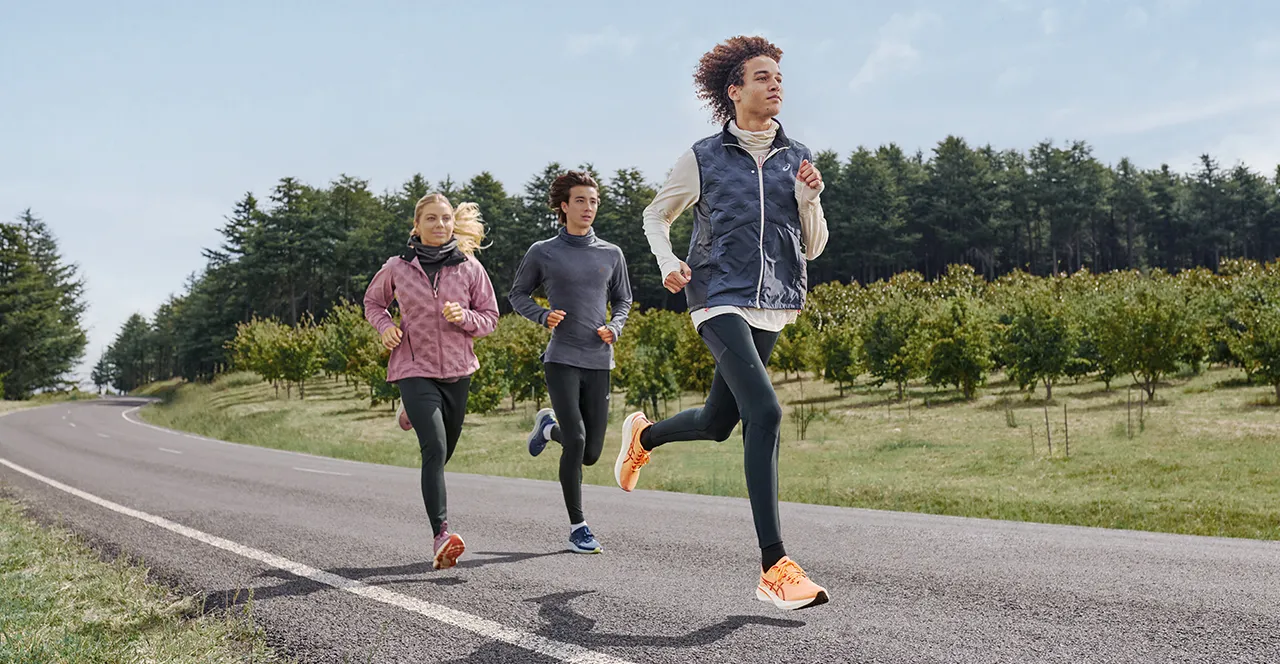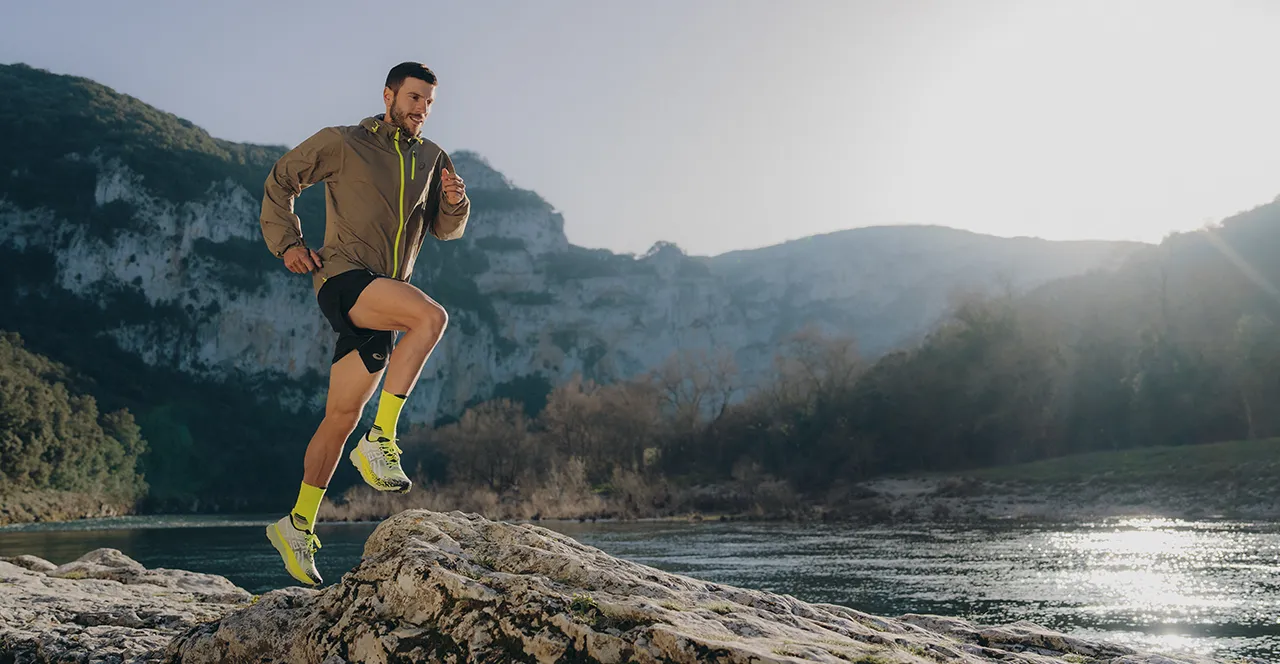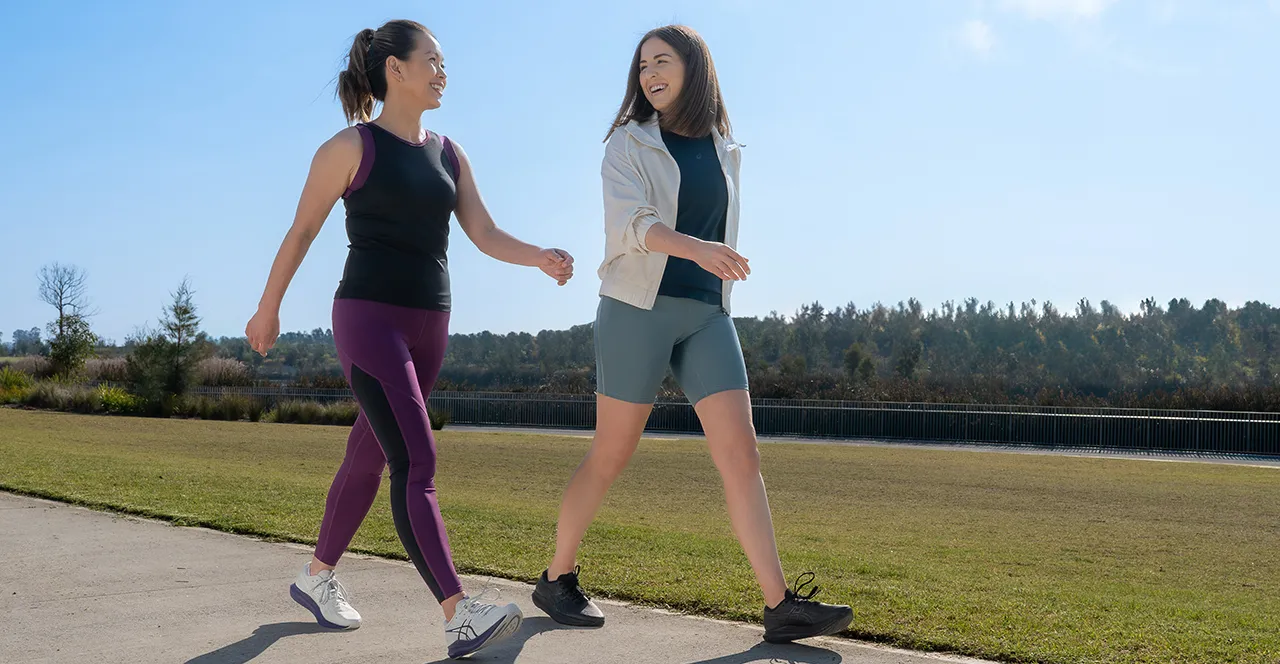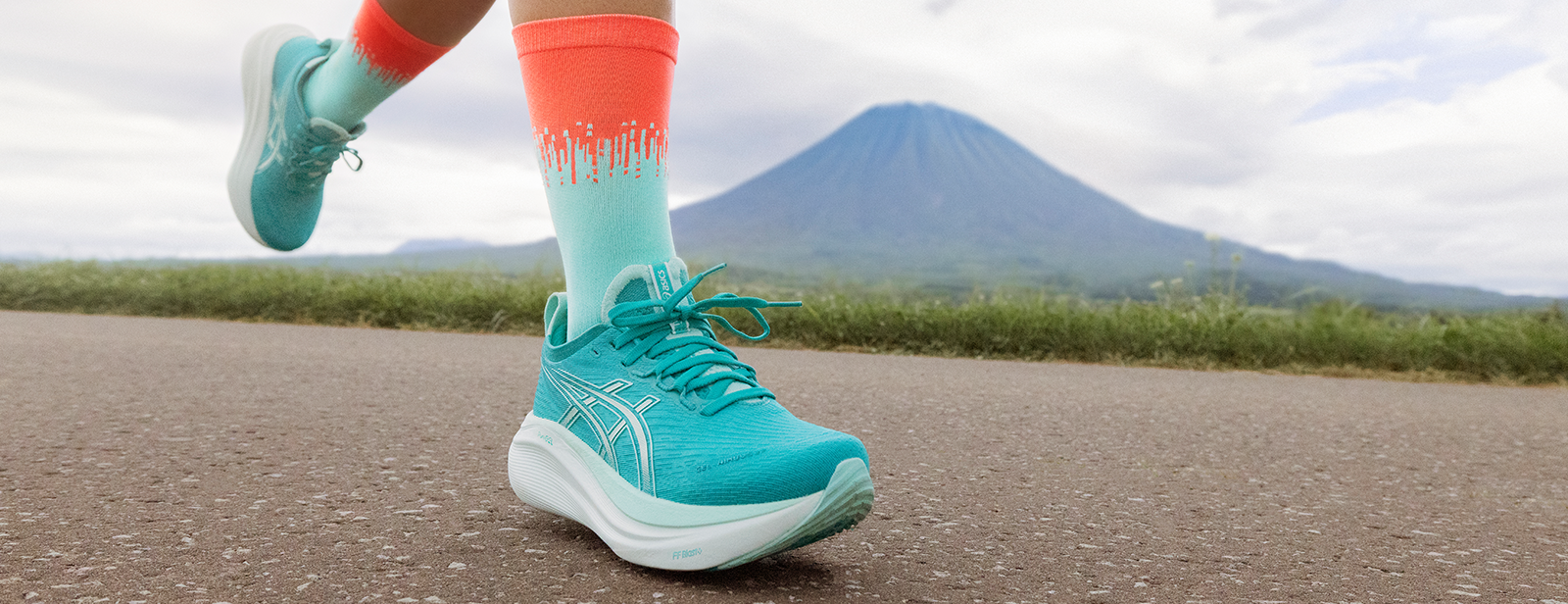
Best ASICS Running Shoes: How to Choose the Right Type for You
October 22, 2024
To help you find your perfect pair of running shoes, we’ve outlined some important factors to consider before you buy.
How to Choose the Best Running Shoes for You
After decades of analysing natural movements and actions at the ASICS Institute of Sport Science, combining “human-centric science” with a focus on innovating unique materials, we have insights to share about how to choose the best running shoes for you. Poor-fitting running shoes can cause slippage, chafing and blisters, and can potentially lead to running injuries. Finding the right running shoes for your foot and running style can make all the difference to your running performance. To help you find your perfect pair of running shoes, our running shoe guide outlines some important factors to consider before you buy.
Please note: The information contained herein is for informational purposes only and it does not, nor does it intend to, contain or constitute medical advice or a medical opinion. Always consult with a qualified and licensed medical professional before making any changes to your footwear or exercise routine, especially if you have pre-existing health conditions, limitations, or concerns.
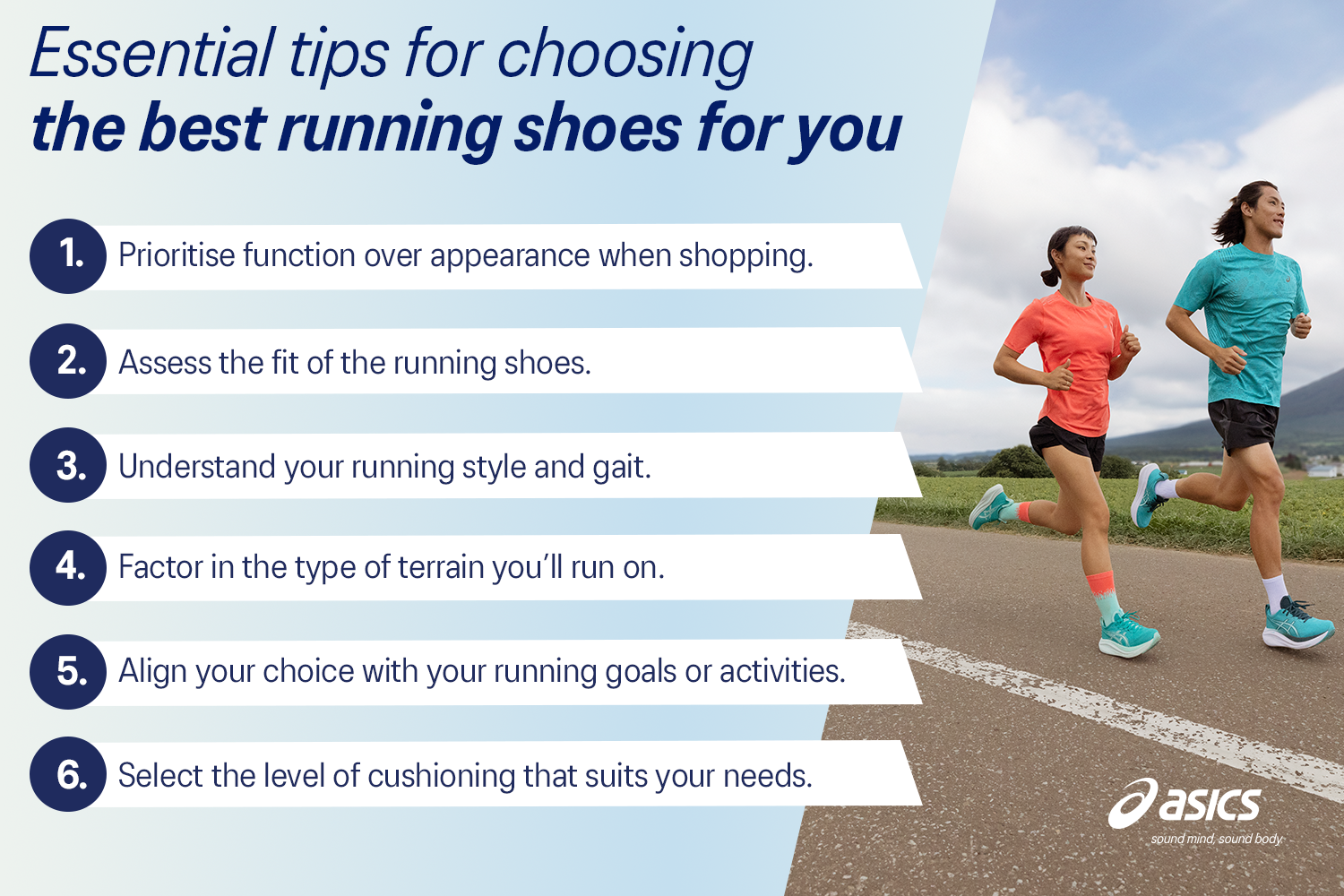
6 tips on how to choose the right running shoes for you
1. Avoid shopping by appearance first
Firstly, stop shopping by appearance first. While you may be a fan of a certain shoe’s color combination or style, those features are less important than how the shoes fit on your feet.
No matter how good a running shoe looks, if it’s not a good fit, it’s not going to be comfortable.
2. Determine your running shoe fit
An ideal time to try on running shoes to determine their fit is in the afternoon. Between morning and afternoon, your feet can expand by 0.5-1.0 cm. Running shoes should be snug but allow for foot swelling. Buying a running shoe half a size bigger than your regular shoes is good practice. A margin of about 1.0-1.5 cm, or about a thumb’s width in the toe, is recommended. The right running shoes for you are the ones that feel the most comfortable. Trying them on is the only way to know for sure. Follow these tips to test for comfort and fit:
Always try on both shoes together to make sure both your feet are comfortable.
Tie up the laces and check for mid-arch support.
Stand on one foot to test for roominess in the width of the shoe.
Stand on your tippy toes to check for flexibility and toe room.
Lift your heel to check for a secure fit.
Wear your running socks.
Shoe sizes and features vary from brand to brand and can fit differently from person to person. The right running shoe for you might not be the right running shoe for someone else. If you’re not sure of your shoe size, use our Shoe Sizing Guide to help you.
Unsure if you need a wider fit? Read our guide How to Choose Running Shoes for Wide Feet.
Or find an ASICS store near you and walk in or book a 30-minute ASICS Foot ID™ service . This will determine your foot shape, pronation and gait to find the right type of shoe for you.
3. Know your running style and gait
Besides fit, understanding your running style and gait will be able to help find the right pair of shoes for you. Seek out a qualified professional, such as a physician or a physical therapist, who can help assess your gait and determine how your foot rolls (or pronates) with each step. Knowing if you overpronate (when your feet roll inward towards your arches) or underpronate (when your feet roll to the outside) will help steer you to the ideal shoe.
If pronation is an issue for you, then a stability running shoe that provides additional support can help stabilise your gait and reduce load on the foot. Read our Pronation Guide for more information.
Find an ASICS running shoe according to your pronation:
Structured shoes: For overpronators who need extra support and stability.
4. Consider your running terrain
How to choose running shoes that are right for you depends on the running terrain. For example, trail running shoes need more grip than cross-training shoes, and road running shoes need more shock absorption. Here are some of the different types of running shoes based on the type of run:
Trail running shoes: For the off-road runner seeking excellent durability, protection and grip.
Road running shoes: Offer excellent comfort and impact absorption for running on hard surfaces for long distances (more than 10kms) or casual running (up to 10kms).
Strength Training/Gym shoes: Specific shoes designed for different types of Strength Training and Gym
Walking shoes: Offer support and are durable for walking.
5. Choose your running goal or type of activity
The right choice of running shoe depends on the type of running you do and the goals you have. How to choose running shoes starts with thinking about these categories:
Speed shoes: For sprinting, racing and speed drills.
Marathon or long-distance running shoes: For training or racing over the miles and hours.
Daily training:For making a run part of your routine.
6. Pick your preferred running shoe cushion
Some runners feel that the right shoes for running have less cushioning for more control, whereas other runners prefer extra cushioning to absorb shock. Three factors affect the level of cushioning you experience in a running shoe: weight, heel drop and the type of cushioning. Let’s take a look at the different kinds of cushioning in running shoes:
Minimal cushion: For runners who love a lightweight, flexible shoe and greater ground feel. Good for racing, training and sprinting.
Regular cushion: For better support and stability. Good for overpronators.
Maximum cushion: For a softer landing and energetic, bouncy rebound. Good for beginners and long-distance runners.
Whether you’re shopping in person or online, make sure you review the return policy before you buy. No matter how good a running shoe looks, if it’s not a good fit, it’s not going to be comfortable. At ASICS, we understand that sometimes you may wish to return a product you have purchased from our online store. It’s important to find a good fit for your foot, which is why we’ve extended our returns period to 45 days for guests and 60 days for OneASICS Members. Find out more about our returns policy here.
Discover our helpful guides below to help find the right running shoe for you:
Pronation Guide
At ASICS, we build shoes for two different foot types: neutral feet (i.e. cushioning shoes) and feet that need support (i.e. pronated feet).
How to Measure your Shoe Size
To get the best fit out of your ASICS running shoes, it’s helpful to know your foot measurements. Read our step-by-step guide to getting the right foot measurement.
In-Store ASICS Foot-ID
Learn how biomechanical analysis and the right shoe can improve your running. Our expert staff can guide you to the perfect fit with a personalise ASICS FOOT-ID service.
Long Distance Running Shoes Guide
When it comes to choosing the best long distance running shoes for you, consider these important factors: comfort, quality, and function.
How to Choose the Best Trail Running Shoes for You
Not all trail shoes are made the same, and while the differences can be subtle, they can make a big impact on the comfort you experience and performance you achieve
A Guide to the Best ASICS Shoes for Walking
No matter what the pace or intensity, you want high performance walking shoes that will protect your feet and take your workout to the next level.
